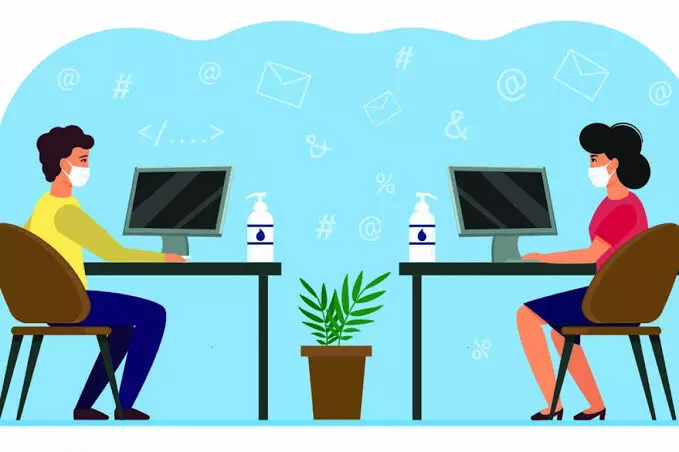'Back to Office' picking up again? Here's how it's going to define the future of work
The remote working model has resulted in employees working within their comfort zone with minimal expenses and multi-tasking. The comeback call and a spike in transportation and food expenses have highlighted the sudden financial burden on the employees' pockets. In fact, employees are happy to take a pay cut, be digitally present and work from home rather than show up at the office.
By Alisha Fernandes
After two years of remote work, getting back to the office is one of the crucial shifts that employees are now trying to adapt to even as companies work towards enabling this transition smoothly. Organizations have been receiving mixed feedback from employees as they slowly get their employees used to the "work from office" culture again! While some are still adamant to get back, others are okay if required precautions are taken and the rest seem very keen to get back to their workplaces. Besides arranging for organizational resources, companies also have the additional responsibility to now work towards the safety of their employees apart from making their work-from-office policies flexible.
The remote working model has resulted in employees working within their comfort zone with minimal expenses and multi-tasking. The comeback call and a spike in transportation and food expenses have highlighted the sudden financial burden on the employees' pockets. In fact, employees are happy to take a pay cut, be digitally present and work from home rather than show up at the office.
For women and parents with school-going kids multi-tasking personal and professional tasks is now again a challenge. Getting back to managing domestic chores and office work along with the add-on of traveling consumes a major chunk of the daily routine. According to a recent report from NASSCOM-BCG on "Future of Work," 70% of employees have opted for a hybrid model (a mix of remote work and work from the office) while 25% have chosen to go completely remote.
Meanwhile, 40% of GenerationZ workers, who began working in remote work culture, want to work from the office, while 39% prefer a hybrid and 19% opted for a remote work model and the rest say they have no preferences.
Given that the Great Resignation in a post-pandemic world is hurting organizations, they are now exploring policies that can retain these employees along with a shift in hiring patterns and redesigning workplaces to make them collaborative and connected. Several companies have opted for a Hybrid Work pattern with two or three days of work from the office and the rest, remotely. Along with the work pattern, companies have also updated their policies related to dedicated paid time off, work-from-office allowances, health and wellness, including Covid in the insurance cover, child care assistance and so on.
Siva Bikkina, CEO of TechDoQuest (TDQ), a Canada-based software development company, says, "Being a remote company, the pandemic did not initially have a great impact on our operation process. As workflow increased, we hired more resources and that required us to coordinate in-person. As COVID cases began going down, we introduced both virtual and in-person events and team meetings. After creating a comfortable work environment in a post-pandemic situation, we introduced the 'Back to Office' model."
Like TechDoQuest, many private sector companies, especially in the IT and Technology space, have been adding "Work from Office Allowance" that helps employees bear additional expenses of commuting to work. Additionally, Covid coverage under insurance policy also has been added to ensure that their health expenses also are taken care of.
Most business leaders, like Siva Bikkina of TDQ, say that these steps have also increased employees' willingness to get back to the office. Not just that, but their productivity as well as the team's overall productivity has spiked. Now that employees are slowly starting to crawl back to the work-from-office trend, it will be way different than what it used to be.
Given that there is an increasing demand for office spaces from emerging sectors such as healthcare, FMCG, e-commerce, and data centers, this will push people to get back to the office, eventually. This shift has made organizations more fluid and that's going to define the future of work! Moreover, learning, understanding and engaging employees is now an extremely crucial aspect of employee welfare for organizations.
So, how is your workplace preparing to bring employees back to the office? Let us know!
(This article is written by Alisha Fernandes from TechDoQuest (TDQ) in partnership with NewsMeter. Views expressed by TDQ do not reflect that of our media organization).